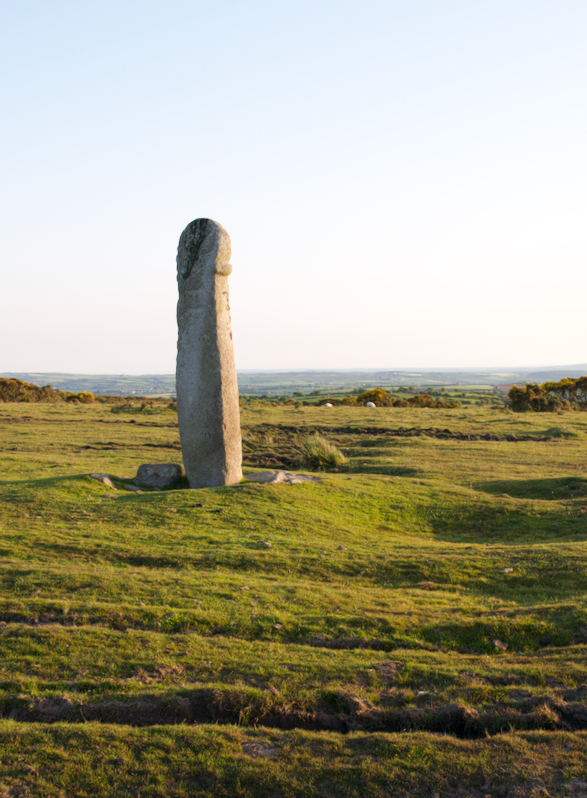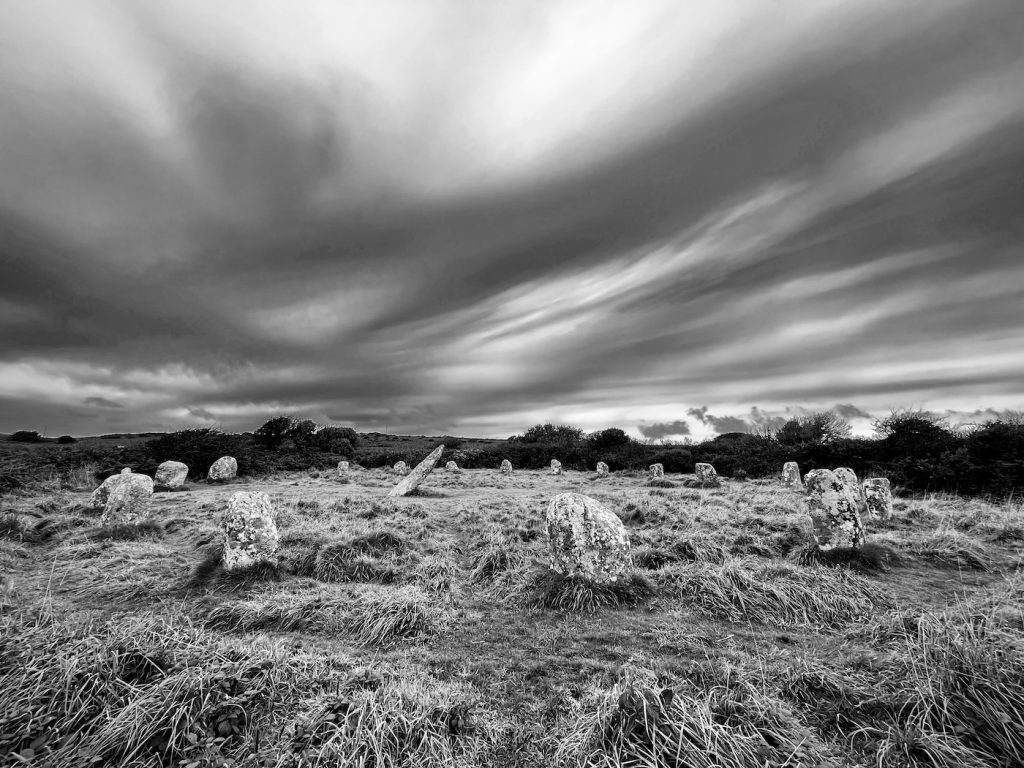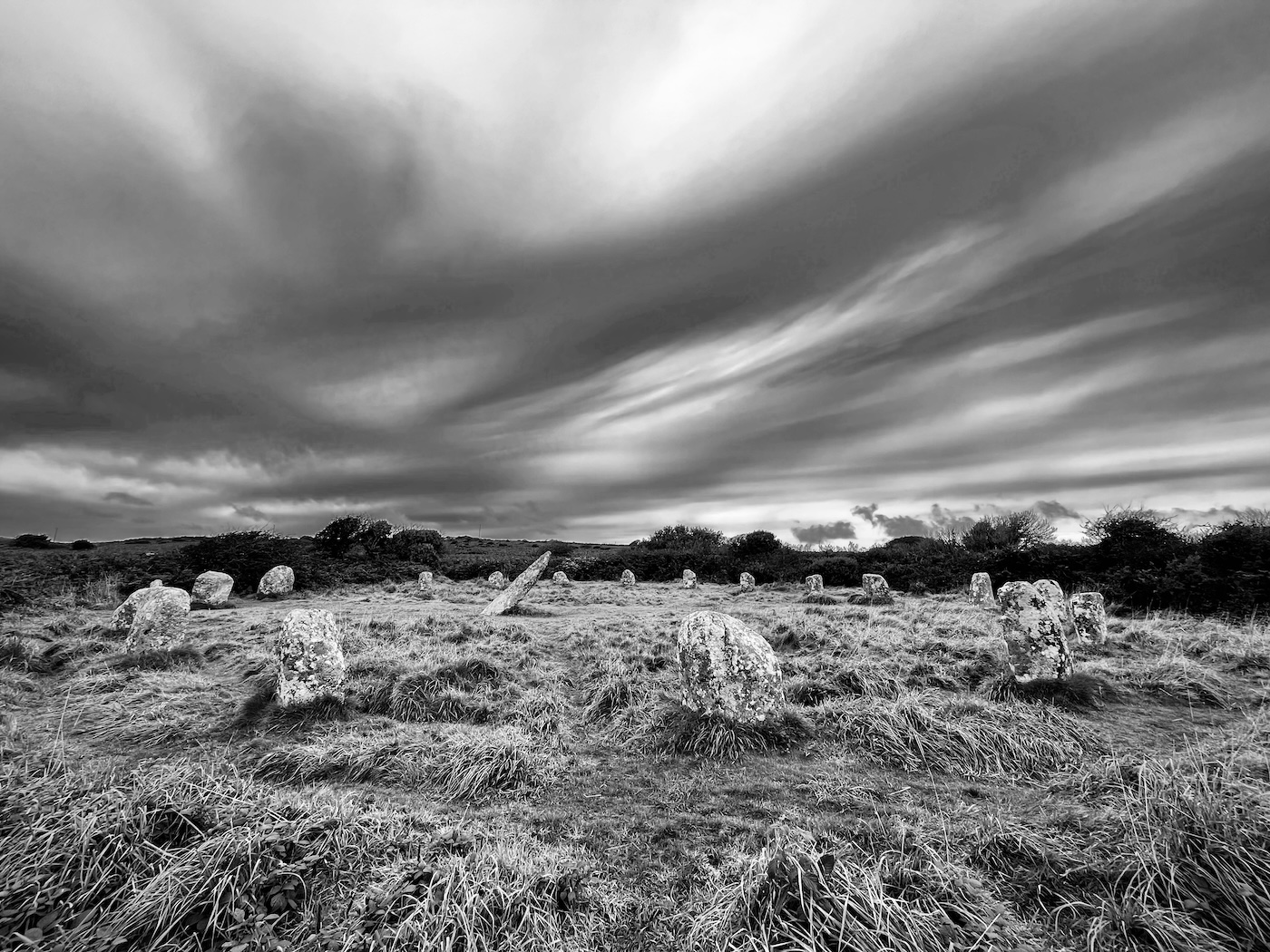The parish of St Buryan is home to many ancient monuments. Lob a piece of granite, and you’re bound to hit one of the many stone circles, standing stones, or tombs dotted about in the landscape. The stone you picked up probably had some historical significance too!
How do we know this ancient area was significant? Surprisingly, through the Christians.
Promoting a brand
Like any maundering male puffed with self-importance who is content to put his flag in the ground and mark a place his own (despite the locals wondering who this jumped-up little man thinks he is), the Christians spread their religion like a drippy-nose toddler spreads a cold.
Like kings and emperors, you could only have one man at the top. There wasn’t room for any of these other ‘false’ idols. Their god is the one true god. Let’s imagine some of those early Christian missionaries visiting Cornwall. A sharp wind carries a light, persistent rain that leaves a cloying film of water on the skin. Visibility is low. Standing stones loom like giant figures through the mist. There is little sign of their god here. They need to get to work.
Repurposing the old with the new
In my previous blog, I mentioned how many ancient monuments were repurposed in later years. The Christians were no different as they got to work building god’s brand. Cornwall has an awful lot of granite. It’s not so much of a case of rock vs paper but rock vs rock. If the locals had their stone monuments, so would the Christians.
Long Tom, albeit much further up from St Buryan, found on Bodmin Moor, is one example of a standing stone repurposed by the Christians and carved into a cross. The interesting thing about St Buryan is it contains more ancient stone crosses than any other parish in Britain. Whatever pagan practices which were taking place here needed counteracting. The Christians had to go in hard.
Not all the stone crosses are repurposed. The masonry carvings have suffered from time and the weather. Moss and lichen have made them their home. Jesus on the cross now looks more akin to a jelly baby who has been left in the sunshine for a bit too long.


My friend Lance has also pointed out that the biggest blot on the landscape made by the Christians is St Buryan church. Originally the site of an oratory for Saint Buriana, England’s first king, Athelstan, erected a church here in 940 CE.
So what were the Christians trying to eradicate?
Maybe Druids?
Of course, it wouldn’t take long for the druids to turn up. Boscawen-ûn stone circle is the one which I will focus on. This circle is documented in the Welsh Triads, a 6th-century manuscript filled with history and folklore. In these pages, we also find figures such as King Arthur and Bran the Blessed. Boscawen-ûn (Beisgawen) is named as one of the three Gorsedds (Druid meeting places) of Poetry of the Island of Britain.

Boscawen-ûn Stone Circle
The circle dates from around 2500-1500 BCE and contains nineteen stones. Eighteen are granite, while one found on the north-east side is pure white quartz. Off-centre within the circle is a leaning stone, giving the impression of an ancient sundial. Carved into this stone is a pair of feet or two axe heads. It is uncertain if this leaning angle is its original position.
A Cornish hedge now surrounds the circle, making the space feel intimate. The circle pulls you in. Be it by the ‘energies’ or the echoes of thousands of years of people gathering in the place. Every stone feels individual. That is the part I like about any stone circle I visit. It doesn’t have that uniform feel. It’s more like a community of stones brought together. Boscawen-ûn means ‘elder tree on the downs’, which doesn’t appear to relate much to these deliberately placed stones. But elder in Celtic mythology is the sacred tree of the fairies. I wouldn’t be surprised if one peered from behind a stone.
The white quartz stone’s significance is lost to us. But quartz must have held some significance to our ancestors. At the Hurlers, a set of three stone circles on Bodmin Moor, the central circle has a quartz floor. Additionally, between this central and the north circles is a quartz pavement which looks uncannily like the Milky Way. Was white quartz seen as a celestial representation of the night sky?
The leaning central stone is lovely to relax against on a hot summer’s day. I doubt we will ever know what the relief carvings upon it are. Maybe they are axes or a set of feet. Or is our modern-day interpretation hiding the true meaning?
Now for the science
Humans have evolved to create and calculate. The stone circle is a great example. Many have nineteen stones, which is deliberate. Why? Because it effectively makes a calendar that embraces both the solar and lunar cycles. It is not purely the waxing and waning of the moon but the 18.64-year lunar cycle known as the Metonic cycle. It’s shown that if you move a marker representing the sun and another for the moon around a stone circle like this, they will eventually meet at the same spot, heralding an eclipse. Rather than religious portents, our ancestors likely knew it was the natural order of things. Individual stones aligned to certain celestials in the night sky. Others aligned to other sites, some within views, others not. Boscawen-ûn seems to be a nuclear point. It makes you wonder how they could align one site to another and another with such arrow-straight precision.
My assumption is they knew an awful lot about the night sky. There were no artificial lights. The movement of the sun, moon and stars taught you when to sow and harvest. They helped the community to thrive. Astrology and astronomy potentially went hand in hand. But considering a pair of dowsing rods will find water, perhaps there is more to these ‘energy’ lines. I recall an archaeologist explaining how sites on Bodmin Moor aligned with the change in the rock structure below ground. How did they know that?

Similarly, this stone circle isn’t a circle; it’s an ellipse. This isn’t down to some half-assed building job. Again, it’s because of a combination of astronomy, mathematics and geometry. It is difficult to see the night sky’s importance in a modern world where we are removed from true darkness and our natural circadian rhythms. Light pollution robs us of that celestial delight and knowledge our ancestors honed over generations. Interestingly, Alexander Thom discovered every megalithic structure he surveyed from North Scotland to Western France was built using the same unit of measurement, which he named the Megalithic Yard.
Like modern grand design house builds that position every window to frame the best views, these stone circles align and frame other similar sites or natural formations.
These alignments are no longer visible because of the hedging. And we can romanticise the past. I find the best thing is to feel. Let the theories bubble up from the plausible to the fantastic. Imagine the invisible thread from you to your ancestors who lived during these times. Perhaps even visit on a clear night and see the stars they carefully watched.
